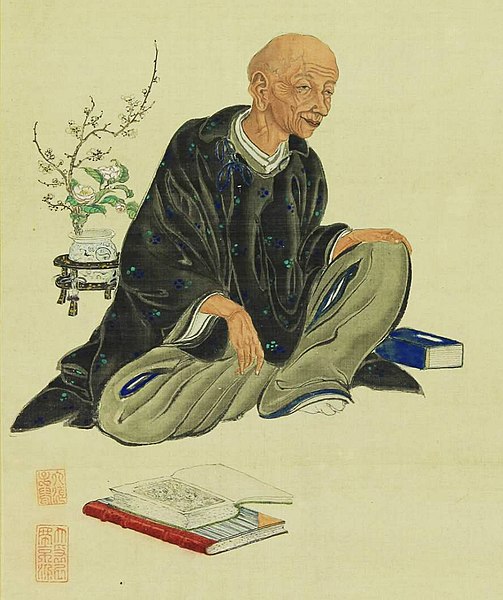Sugita Genpaku was a Japanese physician and scholar known for his translation of Kaitai Shinsho and a founder of Rangaku and Ranpō in Japan. He was one of the first Japanese scholars in Edo to study the Dutch language and is credited with being one of the first Japanese physicians to study Western medical teachings in Japan.
Sugita Genpaku
Drawing of Sugita Genpaku
Bronze statue of Genpaku Sugita in Fukui Prefecture Obama, Fukui. It is installed in front of Sugita Genpaku Memorial Obama Municipal Hospital
Japan's first translation of a Western book on anatomy, published in 1774 (National Museum of Nature and Science, Tokyo)
Kaitai Shinsho is a medical text translated into Japanese during the Edo period. It was written by Sugita Genpaku, and was published by Suharaya Ichibee (須原屋市兵衛) in 1774, the third year of An'ei. The body comprises four volumes, the illustrations, one. The contents are written kanbun-style. It is based on the Dutch-language translation Ontleedkundige Tafelen, often known in Japan as Tafel Anatomie , of Johann Adam Kulmus’ Latin Tabulae Anatomicae, published before 1722 in Gdańsk, Polish–Lithuanian Commonwealth. As a full-blown translation from a Western language, it was the first of its kind in Japan.
A copy of Kaitai Shinsho at Tekijuku
The Kaitai Shinsho, published in 1774
Kaitai shinsho. From the National Library of Medicine.






